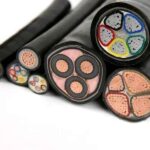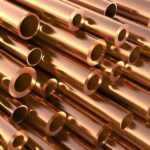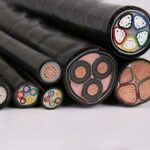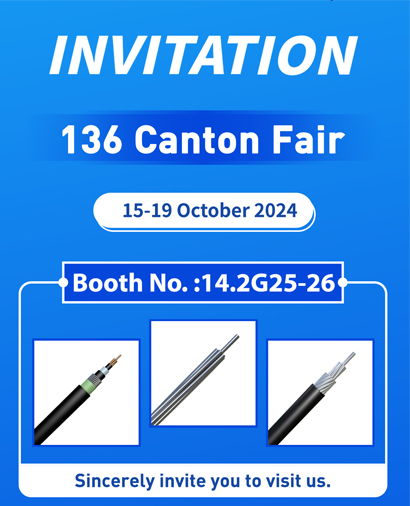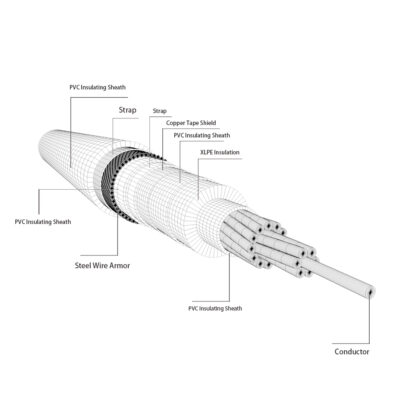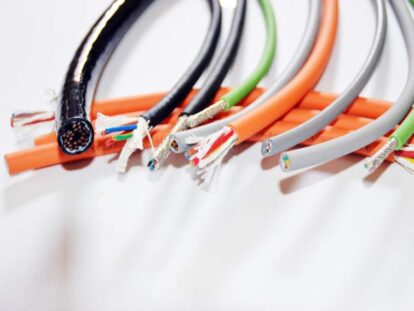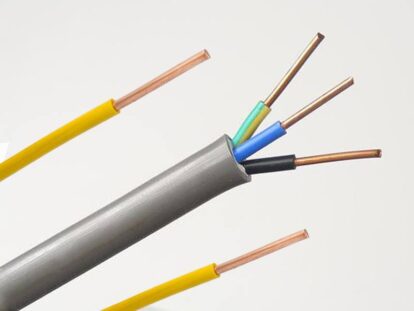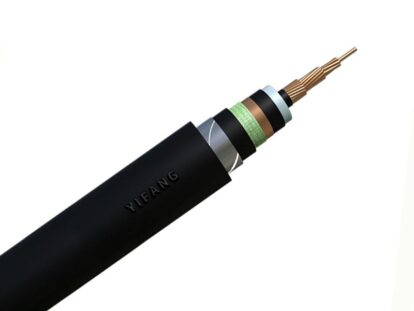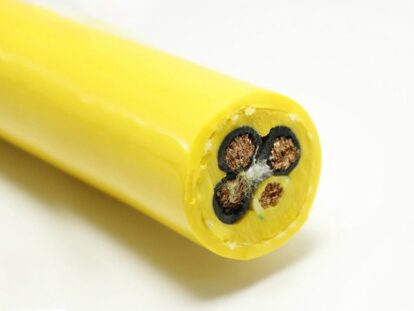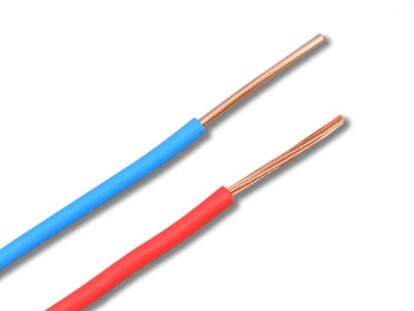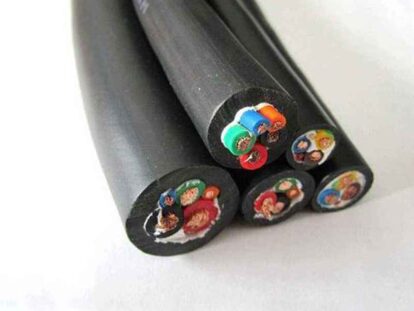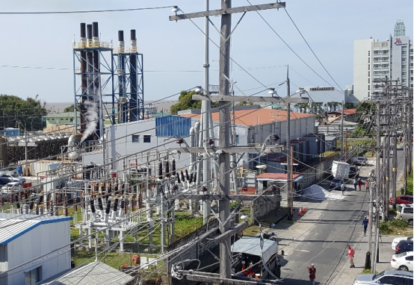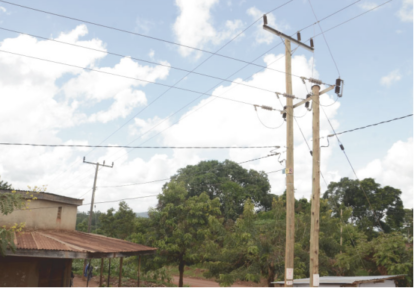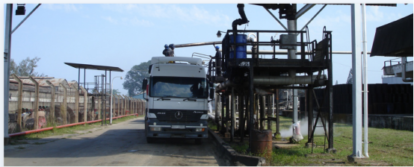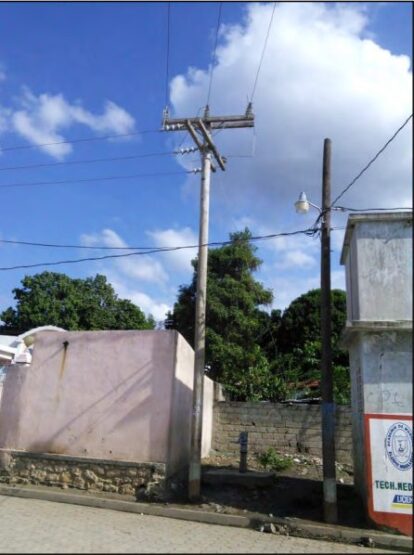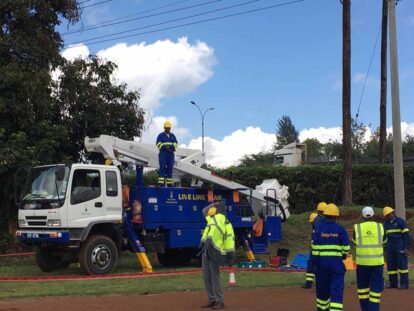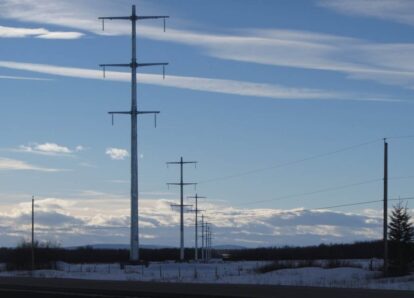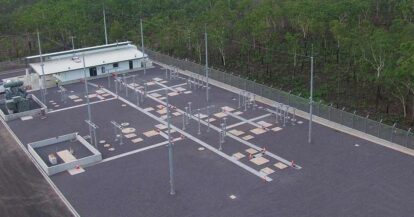In recent years, my country's wind power generation business has developed rapidly. The total installed capacity of wind power and the annual newly installed capacity are at the forefront of the world. However, due to the harsh environmental conditions of wind farms, the cable terminals and cable bodies of the collecting lines in the farm are prone to appear. Therefore, it is very necessary for the safe and stable operation of wind farms to continuously use new materials and new processes with advanced technology and reliable performance to improve the operation quality of collector lines.
Power cables are an important part of the power collection circuit of wind farms. Usually, there are two types of conductors for wind farm cables: aluminum core and copper core. Aluminum core cable and copper core cable have their own shortcomings. The disadvantage of aluminum core cable is poor flexibility, ease to break after repeated bending; poor stability, ease to be corroded and oxidized; high resistivity, higher energy consumption than the copper core of the same cross-section, Large loss; poor ductility, inconvenient to install, etc. The disadvantages of copper core cables are high price; heavier weight; high construction and transportation costs.
Analysis of the characteristics of aluminum alloy cables
The main components of aluminum alloy cable conductors are copper, silicon, magnesium, zinc, manganese, nickel, iron, titanium, chromium, lithium, rare earth, etc. The role of copper increases the resistance stability of the conductor at high temperatures; the role of iron is to increase the conductor. The role of magnesium is to improve the tensile strength of the conductor; the role of rare earth is to improve the corrosion resistance of the conductor.
1. Electrical properties of aluminum alloy cables
Cable compression characteristics: The compression coefficient of aluminum alloy can reach more than 93% after twisting with a special-shaped monofilament。
2. Mechanical properties of aluminum alloy cables
The elongation of hard pure aluminum is very low, and it is easy to be damaged or broken during repeated bending. The elongation of soft pure aluminum is greatly improved than that of hard pure aluminum, but its yield strength is only half of that of copper, and its creep resistance is The denaturation is poor. After a period of installation, the connection is easy to loosen, resulting in an increase in contact resistance and a hidden danger to the safe operation. The mechanical properties of aluminum alloy conductors have the following advantages:
- High extension. The elongation of aluminum alloy conductors after annealing can reach 30%, which is close to that of copper and much higher than that of aluminum. This also shows that aluminum alloy conductors can withstand greater external forces than aluminum conductors.
- Strong, flexible, and easy to bend. During installation, aluminum alloy conductors have a smaller bending radius than aluminum conductors, making it easier to connect terminals.
- Good creep resistance. The alloy elements in the aluminum alloy have been treated by a special process, and the creep resistance and compaction have been greatly improved. When the conductor encounters extreme conditions such as cold flow, overload, and overheating, it can also ensure a stable connection.
3. Corrosion resistance of aluminum alloy cables
The rare metal added to the aluminum alloy conductor further improves the corrosion resistance of the metal material with aluminum as the conductor in terms of chemical properties and reduces the potential difference between different metals. The smaller the potential difference, the lighter the corrosion will be. The rare earth elements in the alloy material can fill the surface defects, refine the grains, and eliminate the local corrosion of the conductor. At the same time, it also brings the negative shift of the electrode potential of the aluminum, which has an anode effect, thereby greatly improving the corrosion resistance.
4. The economic performance of aluminum alloy cables
Compared with copper core cables, the price advantage of aluminum alloy cables is also obvious. The price of aluminum alloy cables with the same current carrying capacity is only 60%-70% of copper core cables. In addition, due to the lighter weight, the installation cost is also indirectly reduced.
35kV cable conductor selection in wind farms
For the 35kV high-voltage cable used in the wind farm, in order to save the project cost, the conductor is preferably made of aluminum core, and the economical current density is used to calculate the appropriate cable cross-section under the premise of satisfying the voltage drop and the corrected current carrying capacity.
With the increase in the number of wind farms and the passage of operating time, the shortcomings of aluminum core cables have gradually emerged, mainly reflected in the following aspects:
- Poor mechanical strength and easy to break. The environment where the wind farm is located is relatively harsh, the wind speed is high, and the wind load on the cable after the tower is large, especially at the cable terminal due to the influence of the umbrella group, the wind surface of this part is larger, so it is more prone to failure. Cable and wire connections are shown in Figure 1.
- The creep resistance is poor. After the wind farm cable is installed on the tower, when the current passing through the conductor is too large, the aluminum conductor will heat up and creep, and the cable joint is prone to loosening and deformation, resulting in poor line contact, resulting in line and equipment failures.
- High resistivity and large loss. The cross-section of the cable conductor is selected for the wind farm, and the cross-section of the aluminum core is much larger than that of the copper core. If the cross-section of the cable is too large, and the length of the cable far exceeds the length of the cable manufacturer's larger production coil, the number of cable segments and intermediate joints will increase, which will affect the current collection. The long-term cooperation of the line is disadvantageous.
For the above reasons, copper cores are mainly used in power cables in wind farms in recent years. Copper core cables can solve various problems of aluminum core cables, but in recent years, the demand for copper materials in my country has gradually increased, and the price of copper has also continued to rise, which has virtually increased a lot of engineering costs and increased the construction site. Risk of stolen cable. In addition, due to the heavy weight of the copper core cable, the requirements for table support are also higher.
Compared with aluminum core and copper core cables, aluminum alloy cables do have many advantages and can replace on many occasions, and some content of aluminum alloy conductors has been added in GB/T3956-2008 "Cable Conductors", so the wind farm collects It is theoretically feasible to use aluminum alloy cables in electrical circuits.
However, there are still some problems to be solved in the large-scale promotion of aluminum alloy cables in wind farms:
Aluminum alloy conductors have various types according to the added chemical composition, and there is no description of the added chemical composition in the domestic specification, so the products are prone to differences in bidding and actual supply.
Due to the different expansion coefficients of aluminum alloy, aluminum, and copper conductors, it is not suitable for direct connection between different conductors. It is necessary to use transition terminals to ensure the reliability of the connection between aluminum alloy conductors and copper and aluminum conductors, which increases the risk of use.
There are few application cases of using aluminum alloy cables in wind farms. In applications in special areas such as high temperature, high cold, high altitude, high salt spray, and high-temperature difference, it will take time to determine whether aluminum alloy cables are more reliable than the aluminum core and copper core cables. test.
Conclusion
After the above analysis, the aluminum alloy cable has good electrical conductivity and excellent mechanical properties, which improves the unreliable connection, poor mechanical properties, and easy creep of the aluminum core cable. However, considering that there are still some problems in the aluminum alloy cable that needs to be improved and solved urgently, it is suggested that the wind farm can try the aluminum alloy cable according to the on-site situation, especially in the technical transformation of the early wind farm, in the current collecting line or a transmission circuit. through the comparison under the same operating environment conditions, to understand whether its line loss, failure rate, etc. are better than copper core and aluminum core cables, and provide practical experience for a large number of future promotions.
We believe that after the test of time and the gradual improvement of relevant regulations, the use of aluminum alloy cables on specific occasions is the development trend of the cable industry in the future.


